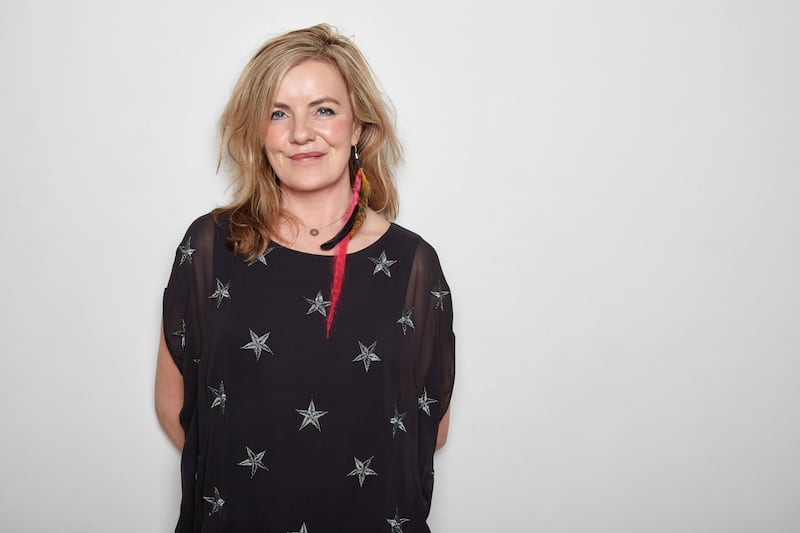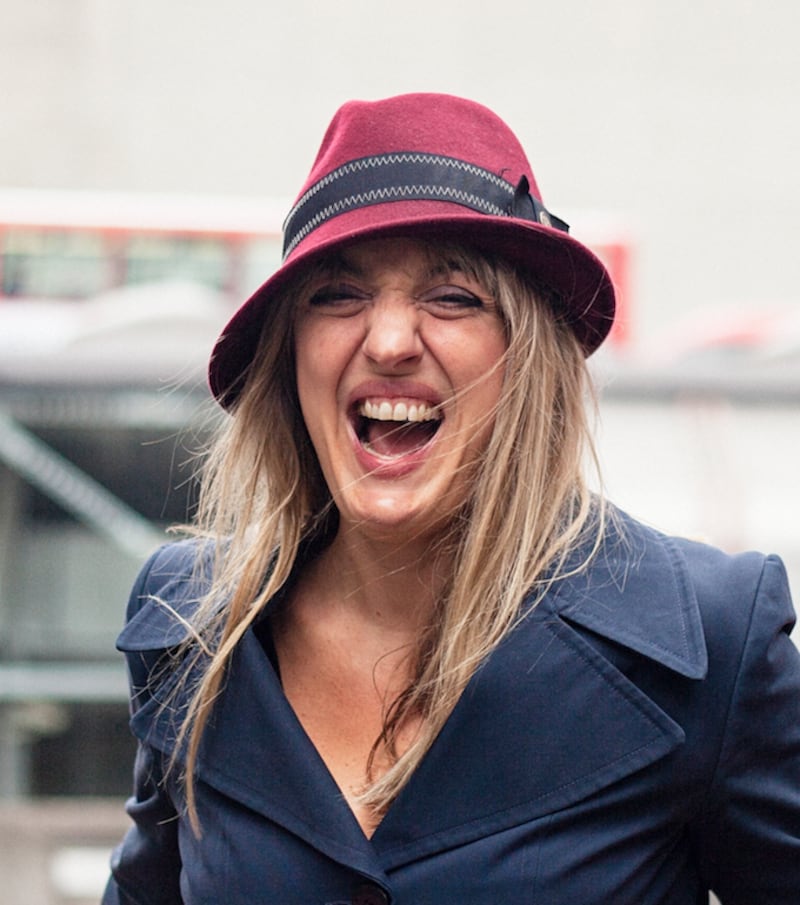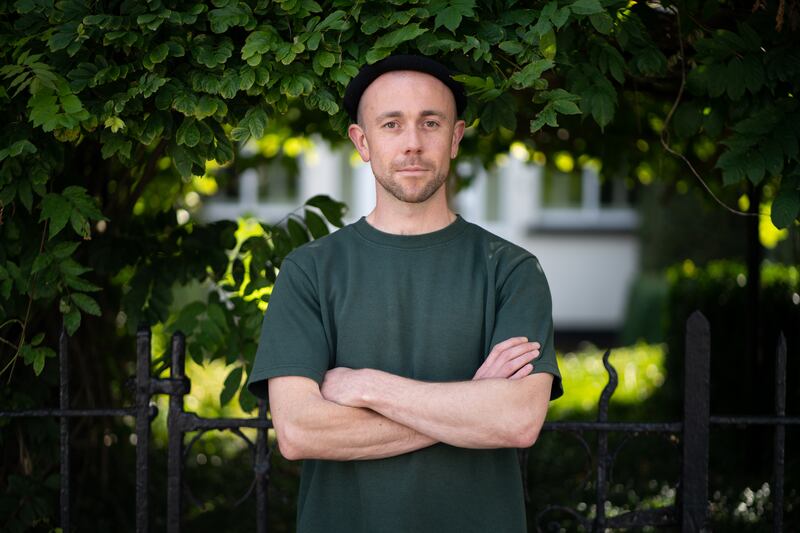At this time of year, the word “ritual” is bandied about a lot – most often by advertisers in an attempt to flog skincare products or gym equipment. But genuine rituals are incredibly important to human beings, psychologically, emotionally and spiritually. Though commonly confused with repetitive actions that are routine, a ritual is container around a moment that encourages us to be mindful, that can promote transformation, and that fosters a connection to a force bigger than oneself, such as nature, love, God, or humanity itself.
Ireland’s relationship with ritual has transformed over the past decade – the number of Irish people attending Catholic Mass is declining, and many people are holding Humanist or secular ceremonies for weddings and funerals. Covid disrupted our relationship with ritual even further, as we mourned people over Zoom and weren’t able to gather together and celebrate new births and new love. The loss we felt illustrated how much we rely on rituals to let us gather, witness, and reflect.
The rising popularity of tools and practices such as sage, yoga, and cacao ceremonies show that our appetite for connection and ritual persists – but often these practices remain individualistic, consumerist, or appropriative. How can we create rituals that foster connection and community, and offer us meaningful ways of understanding ourselves, and each other? Here, three ritual creators, designers and innovators share how rituals can be embraced for life experiences that fall outside of the traditional remit of weddings, births and deaths.

Kathy Scott, The Trailblazery: ‘We have inherited chronological time ... which has no meaning’
Kathy Scott is director of The Trailblazery, which designs and produces live events, learning experiences and communal rituals. Scott believes rituals are methods of meaning-making, often rooted in a desire for transformation and healing.
Who were the big winners at the Irish Restaurant Awards? Best restaurant, chef and more revealed
Dara Ó Briain: ‘I’m a man, I can’t manage family at the best of times ... now I’ve willingly taken on a 600% increase in family members’
Wills and family fall-outs: ‘Money and grief bring out the worst in people’
Manchán Magan: The deeper you dive into Icelandic culture, the more of Ireland you find
“We’re in this whole series of interlocking crises,” she says. “Of course there’s the climate crisis, but it’s also the last roars of late stage capitalism; consumerism; technology. They’re all interlocking crises showing us that these systems are falling apart. And I think what communal ritual can bring to that is a sense of trying to find our way communally through this. It’s about paying attention to the fact that things have stopped working, and pausing, and trying to seek how we can crawl out of this.”
With a strong interest in how human beings relate to the earth and their native lands, Scott encourages Irish people to look to our island’s history and reclaim Celtic rituals and traditions. One way to do this is to resist the ubiquitous calls for self-improvement, transformation, and gym memberships that plague us all at this time of year.
“We have inherited chronological time from the Romans, right, the Gregorian calendar, which has no meaning,” says Scott. “But the calendar that we were bequeathed from the ancients, that Celtic tradition embraces, is a calendar with eight festivals; it’s about deep, ecological, geological time. It’s about circle time, like cycles and seasons and observing the rhythm of the earth. The Gregorian calendar combined with this consumerist monster demands that we get up and join a gym on the first of January, but if we’re actually observing what’s happening in nature, we’re still in deep hibernation. We’re only really meant to come out of that on Imbolc, which marks the start of spring.”
Also known as St Brigid’s Day, Imbolc will now be marked with a bank holiday for the first time this year, on February 6th, giving people in Ireland the perfect opportunity to create new rituals around renewals, awakenings, and fresh starts, she believes.
For anyone who finds the idea of creating a new ritual intimidating, Scott encourages them to start small this spring. “I’d always say to people to get out into nature, even if it’s just to moving water for Imbolc – visiting a river or a well to honour Bridget and all that she represents. I think the new popularity of sea swimming is magnificent. It’s also amazing for trauma and resilience, that cold immersion.”
How do I have a ceremony to let go of this person who’s not dead, but who has changed?
If the temperatures are still too cold for a dip, Scott suggests starting a gratitude practice. “It’s just transformational. I know it sounds vague and of course everything has been hijacked by Hallmark – you can spend loads buying a fancy gratitude journal! – but just write down three things you are grateful for. No matter what’s going on in your life, there’s something that will happen alchemically that will start to change your whole frequency. The heart starts to become activated.”
The Trailblazery also runs women-focused events called Moon Medicine, which have proven wildly successful, meeting once a month on Zoom around the time of the full moon. Scott cites the Waking The Feminists movement, Donald Trump’s election, the Belfast rape trial, the #MeToo movement, and even the discourse around the Mother and Baby Homes as tipping points that led many Irish women seek out ways to grieve, heal and connect in safe spaces. The moon circles include yoga, meditation, music, discussions and workshops with “luminaries” – writers, teachers, leaders and practitioners from different cultures, ethnicities and communities.
“In an Irish context, there was so much wounding that we needed to sit with,” she says of the first meetings. “And we just crawled our way through. So it was always a response. Sometimes over 100 people will come, they are huge.”
Scott notes that while many people feel a physiological, emotional and spiritual need for ritual in modern life, it is still mostly women who are creating or attending these communal spaces. Scott praises musician Damien Dempsey, whose concerts and recent documentary Love Yourself Today encourage men to engage in rituals of connection and expression. But Scott believes there’s a need for more ritual work that specifically caters to the needs of men.
“I’ve been lucky enough to work with some men who are starting to lead those movements, but compared to the options for women, they are thin on the ground,” she says. “I think that’s because of the compression of the trauma of the patriarchy on men. But the needle is moving in the right direction.
“There’s a beautiful aspect of ritual that connects us to our ancestors and those who are yet to come as well. In a way you’re practising for generations you might never meet. And to me, there’s something very beautiful about that.” thetrailblazery.com

Tiu De Haan, the ‘ideal doala’
London-based ritual designer Tiu De Haan, also known as an “ideal doula”, has spent her career studying different types of rituals across cultures, exploring how they can connect us to ourselves. She explains that her work is “about the creation of a sacred experience, of a moment of meaning for reflection, emotion, transition and celebration”.
De Haan offers personal development experiences that embrace ritual, and holds online courses each January that help individuals reflect on the year passed and think mindfully about what kind of year they want to create. But her speciality is designing ceremonies that address individuals’ unique emotional needs. One example cited in her TED Talk, Why We Still Need Ritual, was focused on the needs of a two-year-old boy whose father had died very suddenly.
“The mum, on Father’s Day, wanted to have a ceremony where she could bring seven godfathers to come and be the male role models for this little boy as he was growing up,” she explains. “So she brought a little slide, set it up in a park in a circle of trees. And each of the seven men came, took the boy by the hand and helped him climb the steps, and ad he came down the slide, they made their vow, whatever it was. One promised he would come and play with him every other weekend. Another promised ‘When you’re 16, I’ll take you for your first drink and take you to your first football match.’ It didn’t matter what the promise was; the ceremony was what gave the role models space to give him their love and their time.”
Some forms of loss are more ambiguous than a bereavement, and the lack of recognition around these experiences can make them harder to process. A woman client of De Haan’s was amicably divorced when her ex-husband suffered a severe head injury. The injury resulted in a complete personality shift. The woman and her adult children struggled to process this transformation and the loss of the person they had known and loved.
“There was no funeral, obviously, because he hadn’t died,” says De Haan. “But then there was no way of showing the grief for the person that had gone.” De Haan helped the family to create a ritual to process their feelings. “Our first session was me and her and her kids all co-creating a ritual – that he was never told about and will never be told about – which was to be done on the anniversary of the accident, that was about them memorialising the dad and the ex-husband who was no longer there.
“The ceremony involved sharing memories, writing letters to their father, and reading them aloud before burning them.”
The ritual, De Haan notes, was deeply healing and made it easier for the family to accept and embrace the new version of this person. “It’s about asking, ‘how do I have a ceremony to let go of this person who’s not dead, but who has changed?’ It wasn’t for him, it was for them.”
Some rituals address the timeless, universal experiences like loss, love, and death. But we also need ways to acknowledge new experiences only made possible by recent advances in technology. De Haan was asked by Moorefields Eye Hospital in London to create a ceremony where the families of people who have died and donated their corneas meet the people who can see as a result. “Just imagine that. There’s never before been a precedent for that. It’s a completely 21st century ritual – but it’s an ancient human need to honour life, and love, and death.”
Another modern example comes from advances in reproductive technology, where women who have had eggs or embryos frozen decide to no longer keep them, effectively shutting the door on one potential pathway in life. “What do you do about your frozen eggs, if that’s a very particular experience that has never been ritualised?” asks De Haan. “New rituals often come from a sudden recognition that there is something that has not been addressed.” tiudehaan.com

Hugh Farrell, co-founder Listen & Breathe
Writer, dramaturge and producer Hugh Farrell works across theatre, opera, music and the visual arts, and is the co-founder of the company Listen & Breathe. Farrell enjoys creating blended reality experiences to explore how we interact with ourselves, each other and our environment, and much of the work that he produces grapples with the idea of ritual. One production, Feast: Every Year I Grow Again, is an augmented-reality dining experience designed in collaboration with Michelin-star chef, Kevin Thornton.
“With Feast, we actually get 12 people to sit around the dinner table and eat dinner together with headphones,” Farrell explains. “We slow down the ritual of eating together, so that we can look at that experience for what it is. Food has become so abstract in our lives. Food has become convenient, we tend to eat it quickly, alone, on the run. We tend not to think about where it comes from, or that what we’re eating is actually becoming us, or the relationship between what is on dinner table to the farmer. So Feast is about trying to bring people together and witnessing all those connections, both in the ritual of the meal together, but also the relationship of the food to its wider context.”
Dublin-born Farrell left the church as a teenager. As an adult he embraces Eastern mysticism, yoga and meditation. But he always remained aware of the important role Catholic mass has played in Irish life, and the spiritual and emotional vacuum that is often left for those who stop attending.
That moment of connection is flipping the framework of the confessional booth where you go in and you just exit alone
“There’s something really important in mass – literally the word, like amassing together – where communities come together once a week to rest, to see each other, to be seen. I think it’s really important to be seen in your day; it’s healing. And we have a crisis of loneliness in the country that was exacerbated by the pandemic. So a really important part of Listen & Breathe shows is all about meeting in public and seeing each other and then going on a journey together. I see theatre as being founded in ritual.”
One of Farrell’s projects subverted a traditional Catholic ritual: Confession. Along with schoolfriend Shane Sugrue of Qualified Design Studio, Farrell worked on Without Sin, an immersive theatre experience that featured at the 2022 Dublin Fringe Festival. Without Sin consisted of black box that sat in the grounds of Dublin Castle. Two individuals were invited to enter the box, finding themselves in their own small confessional booth, separated by a wall. Unable to see each other and communicating via a microphone and headphones, the participants were invited to select personal questions from a deck of cards and have an open and honest conversation as soft lights and music created a reflective atmosphere.
“Shane identified that in the idea of the Confession box, there’s a real therapeutic power of getting something off your chest,” says Farrell. “But there’s a problem in the idea of the Confession box where you’re absolved, you don’t actually do any of the work that you need to do. Also it’s hugely built around moralistic shame. So what we tried to do was take that typology of the Confession box, which is familiar to everyone, and reframe it, and try to get shame out of the box. We wanted instead to create an open hearted dialogue between two people as an act of healing, and to let participants know that whatever you’re carrying around with you, you’re not alone. It’s about feeling seen or heard. We don’t have a lot of space for that in our in our culture.”
I tell Farrell that I participated in Without Sin on its final night in the 2022 Fringe Festival, and had a beautifully vulnerable conversation with a stranger in the dark. As we both exited the box after our experience, we instinctively hugged – a reaction Farrell says is common.
“That moment of connection is flipping the framework of the confessional booth where you go in and you just exit alone, and there’s no connection with the authority figure on the other side. But here, people often hug!” he laughs. “Or when people who knew each other already go in, we often found that they walked off holding hands and just kind of like squeezing each other’s hands a little more, it was really beautiful. It was like they said something that they hadn’t been able to say or didn’t realise they needed to say.” listenandbreathe.live














